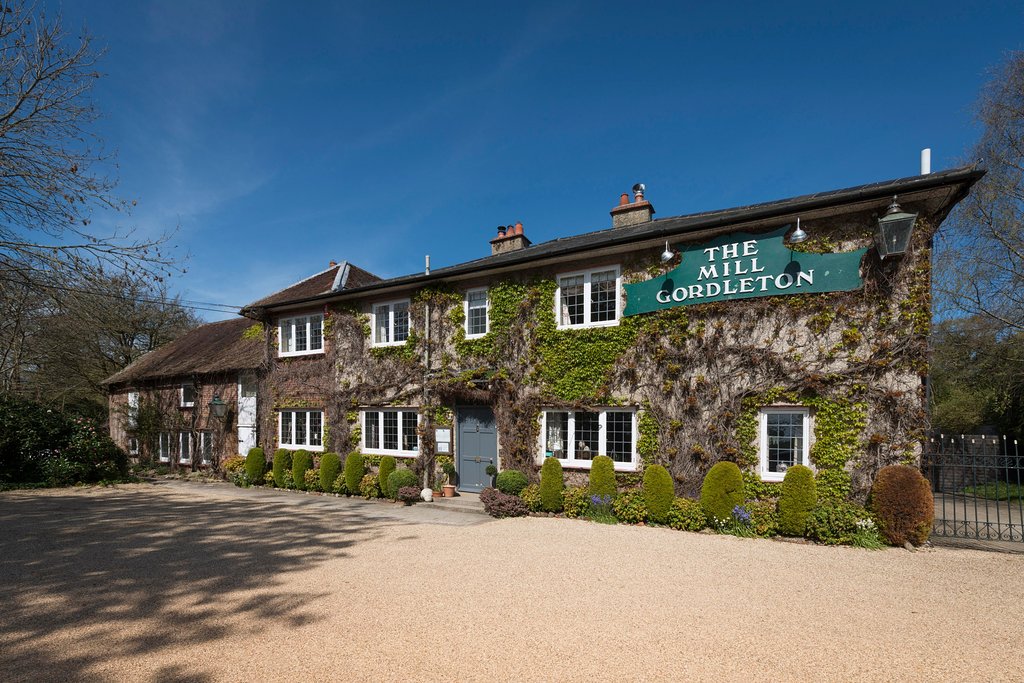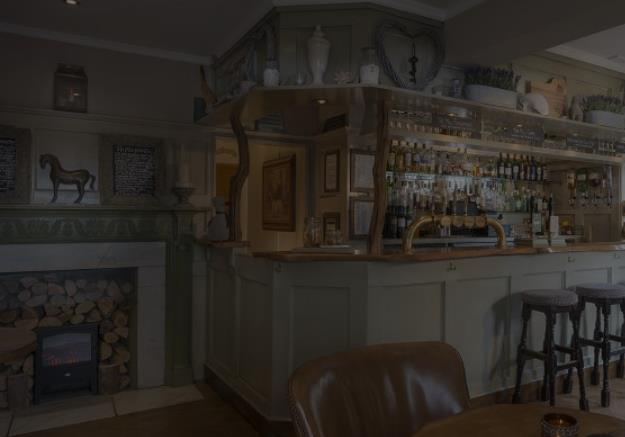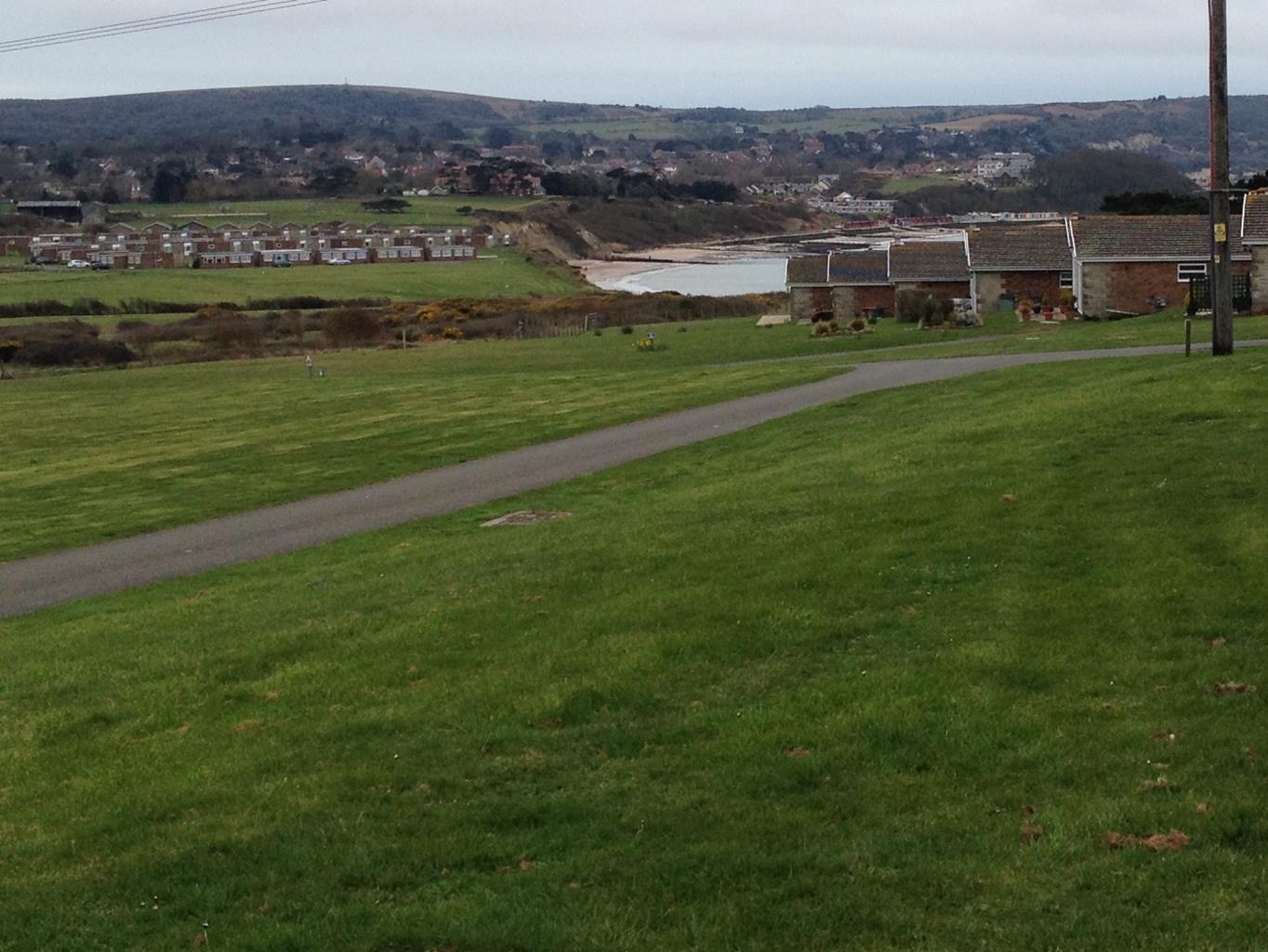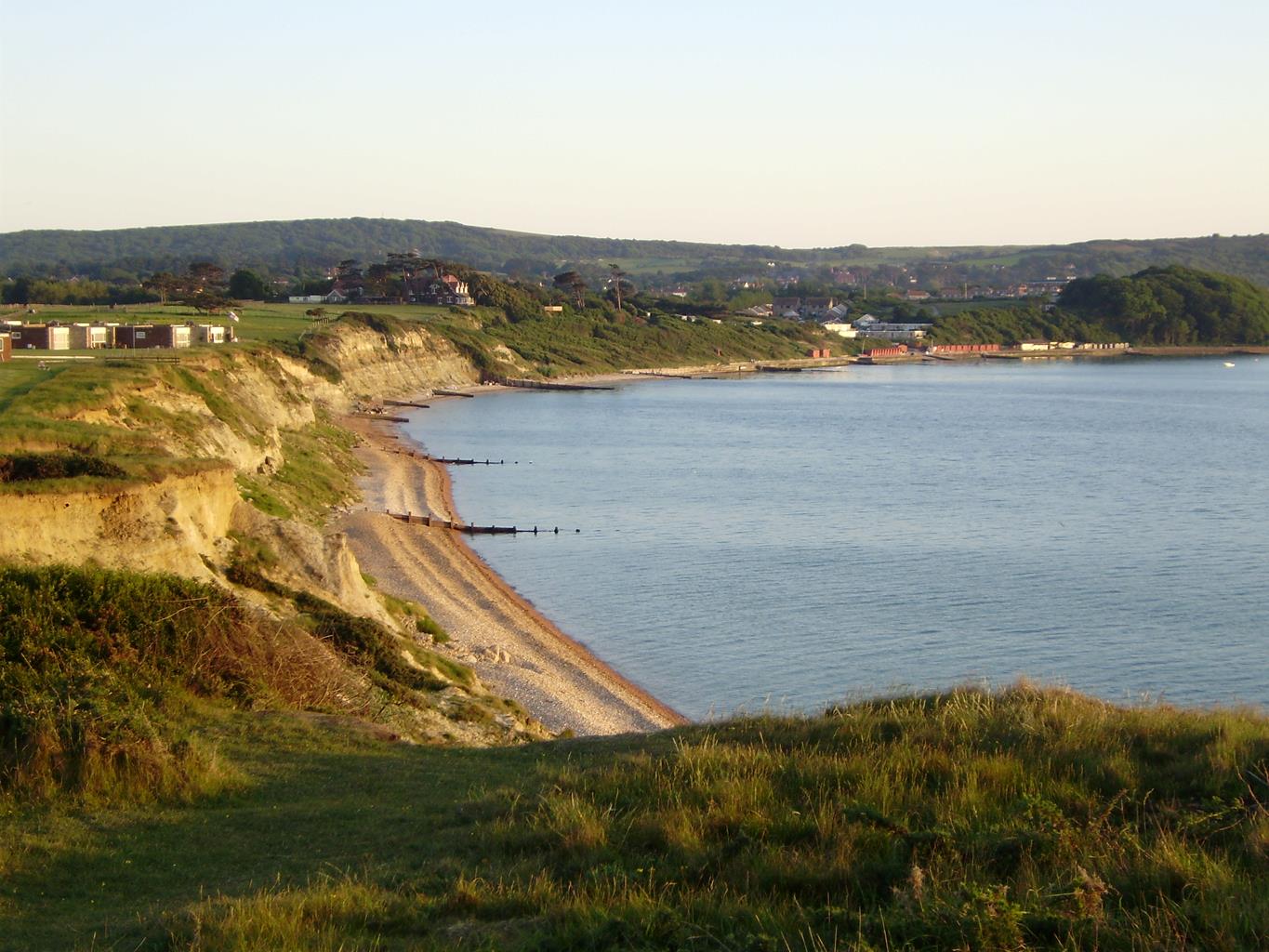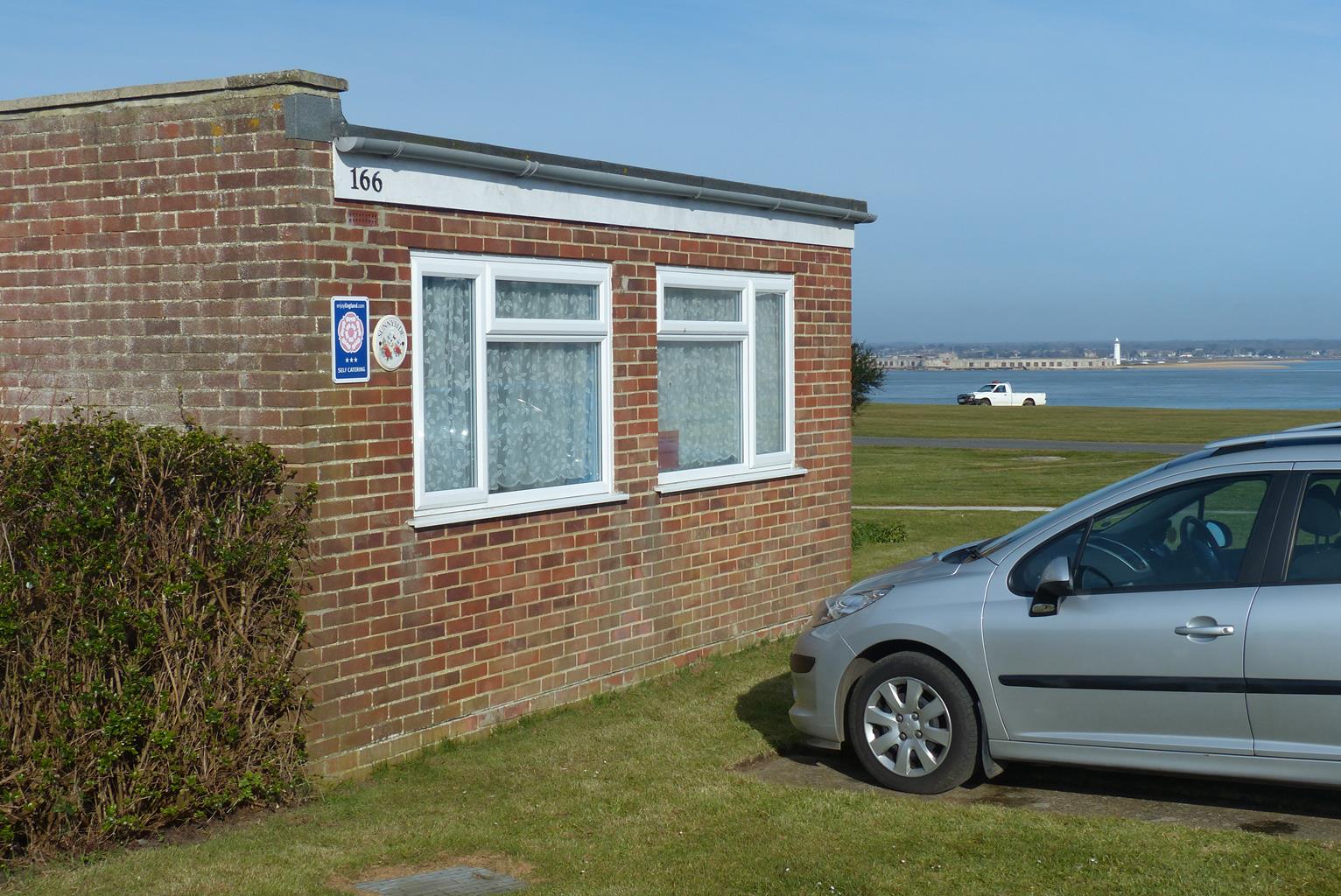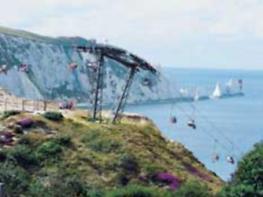Perched atop white cliffs overlooking the eponymous bay, Freshwater Bay House sits in extensive…
Tennyson's Freshwater

From lofty downland with magnificent coastal views to tranquil estuary scenes.
6.1 miles (9.8kms)
About the walk
Away from the bustle of the resort towns, West Wight is a quieter, less populated area of great natural beauty, offering open countryside, rugged cliffs, wonderful views and fascinating wildlife. This exhilarating ramble encapsulates the contrasting landscapes of the area, from the wildlife-rich tidal estuary of the River Yar to magnificent chalk headlands and hills with their breathtaking views.
Solitary Walks
Of the many literary greats who sought seclusion and inspiration on the island during the 19th century, it was the poet Alfred, Lord Tennyson, who chose to reside in West Wight. Tennyson and his wife Emily first came to Farringford House, a castellated late-Georgian house (now a hotel) in 1853. From the drawing room he could look out across Freshwater Bay and the slopes of Afton Down, a view he believed to be the most beautiful in England – ‘Mediterranean in its richness and charm’. Almost daily he would take long solitary walks across the chalk downland, enjoying the bracing air, which he declared to be ‘worth sixpence a pint’. The island inspired some of his greatest poems. ‘The Charge of the Light Brigade’ was written on the Down that now bears his name, and ‘Maud’, ‘Enoch Arden’ and the ‘Idylls of the King’ at Farringford.
Tennyson’s poetry was so popular that he soon became one of the richest poets in the country. Combined with his magnetic genius and personality, he soon changed the face of West Wight, as tiny Freshwater became a cultural centre, attracting the most eminent Victorians of his age, including Charles Kingsley, Garibaldi, Lewis Carroll, Charles Darwin and Prince Albert. Farringford was the perfect place to entertain friends and celebrities, but it was time spent alone wandering the Downs or in the fine garden that made Farringford so special. They bought a house on the mainland and only returned to Farringford for the winter, when they were undisturbed. Memories of the great man and his family are dotted along this walk.
On Tennyson Down you will find the granite monument erected in his honour in 1897. On quieter days you can imagine the poet striding up the hill, dressed in his flowing Spanish cloak, wide-brimmed hat and stout holly stick, for his favourite downland walk. In Freshwater, step inside All Saints church to view the memorials to the family, while in the peaceful churchyard you will find Emily’s grave and a lovely view across the serene estuary of the River Yar.
Walk directions
From the car park, turn right along the road, then left before the bus shelter along a metalled track, signed ‘Coastal Path’. After 50yds (46m) bear right through a gate and follow the well-walked path, a gateway and up to the memorial cross at the summit of Tennyson Down.
Continue down the wide grassy swathe, veering right, which narrows between gorse bushes, to reach the replica of the Old Nodes Beacon. Here, turn sharp right down a chalk track. Continue through a gate and at a junction (with the car park on the right) keep straight on up the narrow path. At the top turn left onto grassy track.
The path widens then descends to a kissing gate into woodland. Proceed close to the woodland fringe before emerging into more open countryside. Passing a gate on the left, just beyond a disused pit on your right, turn left at a waymarker post down a narrower path. Go through a kissing gate, then follow the enclosed path to a kissing gate. Pass through and then walk along a fenced path to a gate into a field and then another straight away out of the field.
Turn right and follow the path, passing a farm on your left, and then cross a gravel track and take the bridleway beside the wall of Farringford and pass beneath a wooden footbridge. Continue downhill to a gate and the road. (Turn left if you wish to visit Farringford). Turn right opposite the thatched church (St Agnes), and turn left down Blackbridge Road. After passing a pill box on your left and just a few paces before the bridge, turn left to enter Afton Marsh Nature Reserve.
Join the nature trail, following it across a footbridge and beside the stream to the A3055 (this can be very wet in winter). Turn left and almost immediately cross over to join the bridleway (F61) along the course of the old railway. In half a mile (800m) reach The Causeway.
Turn right, passing Tideways Cottage and follow this down to the B3399. Turn left and shortly after cross onto unmetalled Manor Road. In a few paces, bear left through a gate on a public right of way over private property, and ascend across grassland towards Afton Down.
Keep ahead at a junction of paths beside the golf course, soon to follow the gravel track right to the clubhouse. Pass in front of the building to reach the access track, keeping left to the A3055. Turn right downhill, on the pavement into Freshwater Bay and the car park.
Additional information
Downland, field and woodland paths, some road walking and stretch of disused railway
Downland, farmland, freshwater marsh and salt marsh
Let off lead on Tennyson Down unless signs state otherwise, and along old railway
OS Explorer OL29 Isle of Wight
Pay-and-display car park at Freshwater Bay
Freshwater Bay
WALKING IN SAFETY
Read our tips to look after yourself and the environment when following this walk.
Find out more
Also in the area
About the area
Discover Isle of Wight
There’s a timeless quality to the Isle of Wight. For many it embodies the spirit and atmosphere of English seaside holidays. Small and intimate – at just 23 miles by 13 miles – it’s a great place to get away from it all. And with its mild climate, long hours of sunshine and colourful architecture, it has something of a continental flavour.
Explore the island’s varied coastline at any time of the year using the well-established Coast Path. Even in the depths of winter, the weather conditions are often favourable for walking. The island has more than 500 miles of public rights of way in all. There are numerous other things to do too. You could plan a week’s itinerary and not set foot on the beach. The island’s history is fascinating and it was long considered as a convenient stepping stone for the French in their plan to invade the UK mainland. Various fortifications – including Fort Victoria, Carisbrooke Castle and Yarmouth Castle – reflect its key strategic role in the defence of our coastline.
Nearby stays
Restaurants and Pubs
Nearby experiences
Recommended things to do
Why choose Rated Trips?
Your trusted guide to rated places across the UK
The best coverage
Discover more than 15,000 professionally rated places to stay, eat and visit from across the UK and Ireland.
Quality assured
Choose a place to stay safe in the knowledge that it has been expertly assessed by trained assessors.
Plan your next trip
Search by location or the type of place you're visiting to find your next ideal holiday experience.
Travel inspiration
Read our articles, city guides and recommended things to do for inspiration. We're here to help you explore the UK.








